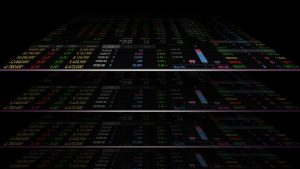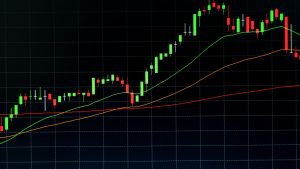The S&P 500 is one of the most widely tracked stock market indexes in the world. It serves as a barometer for the U.S. economy and investor sentiment. But what many traders don’t realize is how heavily the sector weightings, and even macroeconomic forces like the U.S. Dollar Index (DXY), shape its behavior.
If you’re a trader, investor, or macro-watcher, understanding what drives the S&P 500 gives you a critical edge.
📊 What Is the S&P 500?
The S&P 500 (Standard & Poor’s 500 Index) is a market-cap-weighted index of the 500 largest publicly traded companies in the U.S. It represents approximately 80% of the total U.S. equity market value, making it a powerful indicator of broad market trends.
It includes companies from all major sectors, which are grouped into 11 official categories according to the Global Industry Classification Standard (GICS).
🏦 Which Sectors Dominate the S&P 500?
While the S&P 500 covers all sectors, it’s far from equally weighted. A few heavyweight sectors dominate the index due to market capitalization.
Here are the top five sectors by weighting as of mid-2025:
1. Information Technology (~29%)
- Key companies: Apple, Microsoft, Nvidia, Broadcom
- Why it matters: Tech has been the S&P 500’s growth engine for over a decade. It’s also highly sensitive to interest rates and inflation expectations.
2. Health Care (~13%)
- Key companies: UnitedHealth, Johnson & Johnson, Eli Lilly
- Defensive sector that tends to perform well during market downturns due to inelastic demand.
3. Financials (~11%)
- Key companies: JPMorgan Chase, Bank of America, Goldman Sachs
- Strongly influenced by Fed policy and bond yields. Often correlates inversely with tech.
4. Consumer Discretionary (~10%)
- Key companies: Amazon, Tesla, Home Depot
- Driven by consumer confidence and retail spending, making it a good barometer for economic health.
5. Communication Services (~9%)
- Key companies: Alphabet (Google), Meta (Facebook)
- A blend of tech and media, this sector often behaves like a tech proxy.
Together, these five sectors make up over 70% of the total S&P 500 weight, meaning their performance heavily influences index moves.
💵 How Does the Strength of the Dollar Affect the S&P 500?
The U.S. Dollar Index (DXY) measures the dollar’s value relative to a basket of foreign currencies. Its movements often correlate, or conflict, with the performance of U.S. equities.
Here’s how:
🔻 A Strong Dollar Can Hurt the S&P 500:
- Exporters suffer: U.S. companies that rely on international sales (especially in tech and industrials) lose competitiveness as their products become more expensive overseas.
- Earnings pressure: A strong dollar reduces the value of foreign earnings when converted back to USD.
🔺 A Weak Dollar Often Lifts the S&P 500:
- Boosts multinational earnings: Companies with global operations benefit when earnings from abroad translate to more dollars.
- Commodity price boost: Sectors like energy and materials often benefit as a weaker dollar drives up commodity prices.
Sector Sensitivity to the Dollar:
- Tech, industrials, and consumer staples are particularly vulnerable to dollar strength due to large overseas exposure.
- Financials and utilities are more domestically focused and less affected by currency fluctuations.
🔄 Why Traders and Investors Should Care
When you understand sector composition and dollar dynamics, you can start to anticipate how the S&P 500 might behave under different macro conditions:
- Rising dollar + rising rates? Watch for tech weakness and strength in defensive names.
- Falling dollar + improving global outlook? Expect growth sectors like tech and consumer discretionary to lead.
This kind of macro-sentiment awareness is what separates average investors from great ones.
📈 Want to Trade the S&P 500 With Precision?
At EPIQ Trading Floor, we help traders stay ahead of macro shifts with real-time analysis, sector heatmaps, and trading insights you won’t get anywhere else.
🧠 Learn how to trade:
- Market indexes like SPY and QQQ
- Sector ETFs like XLK, XLF, XLE
- And even micro-futures like MES and MNQ for pinpoint control
🎓 Plus, get access to our Trading Academy, real-time macro dashboards, and weekly live calls, all designed to keep you focused and profitable.
👉 Start your 3-day free trial now and take your trading to the next level.
⚠️ Disclaimer
This blog post is for educational purposes only and does not constitute financial advice. Always conduct your own research and speak to a qualified professional before making investment decisions.










Responses